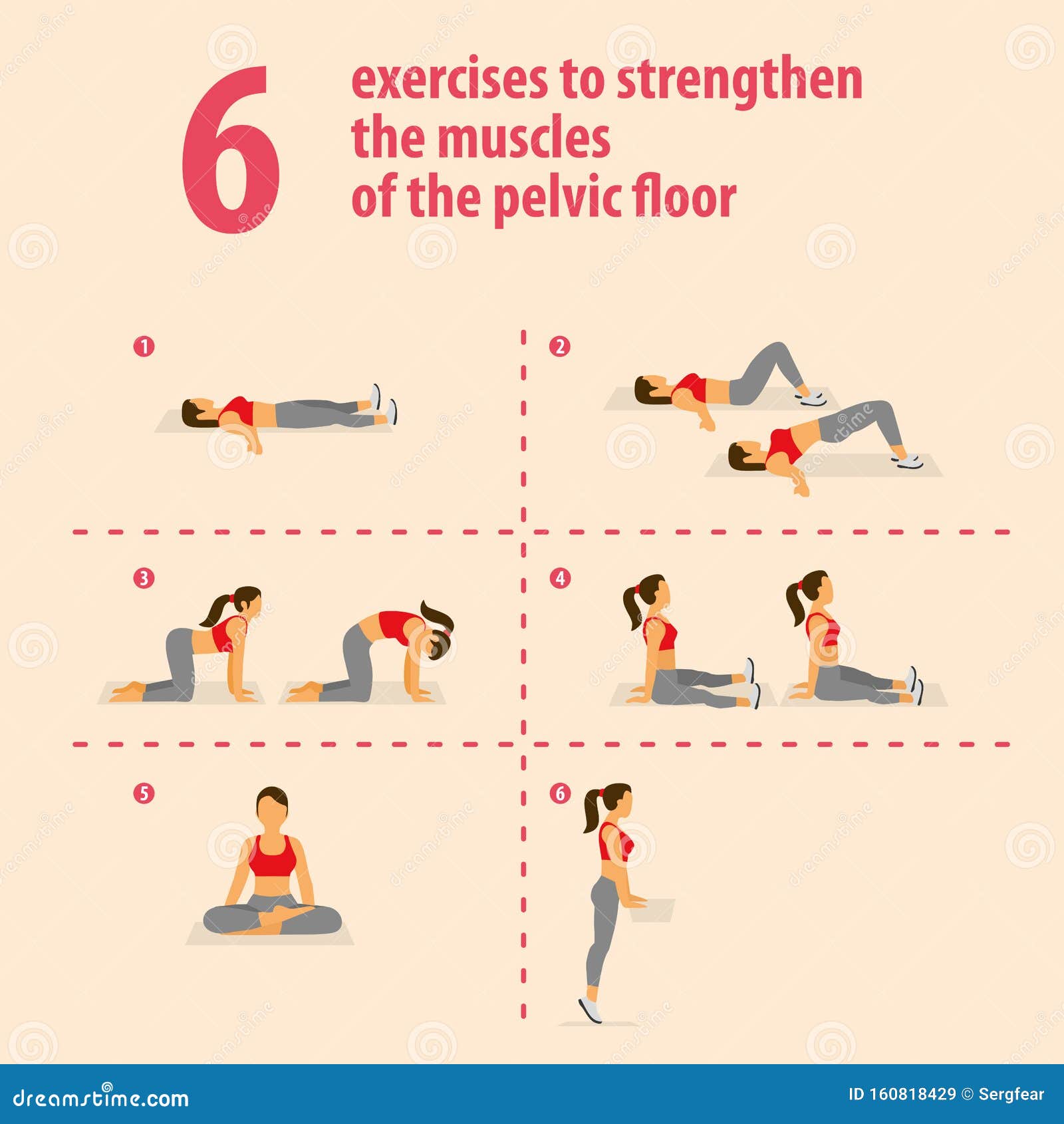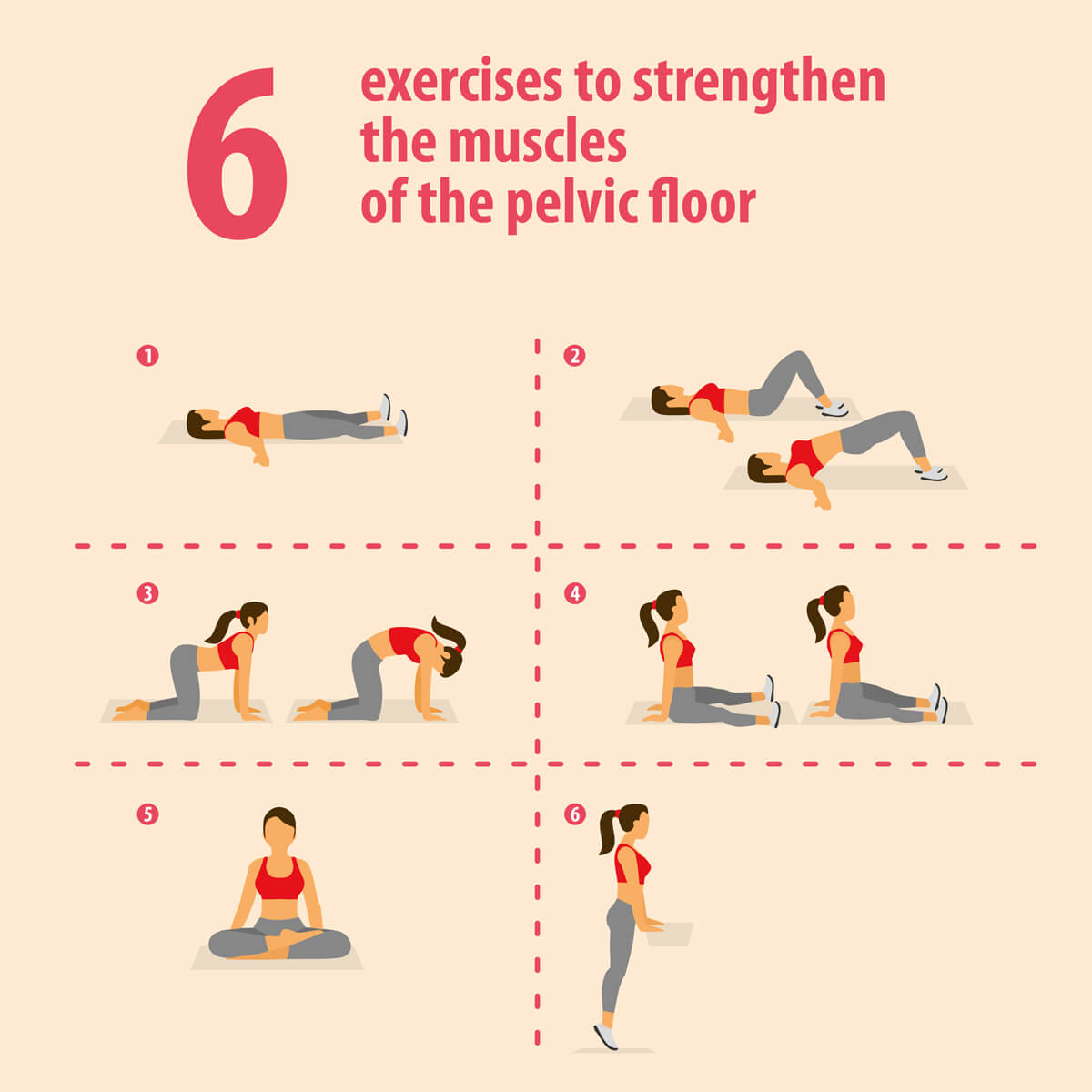Imagine this: you’re at the gym, lifting weights, feeling strong and empowered. Suddenly, a tiny cough turns into a much larger problem, and you feel a familiar pang of fear – an embarrassing leak. This isn’t just a funny anecdote; it’s a reality for millions of people, and it can be directly linked to weak pelvic floor muscles. But don’t worry, it doesn’t have to be this way. In this comprehensive guide, we’ll explore the best ways to strengthen your pelvic floor muscles, so you can reclaim your confidence and enjoy a more fulfilling life.

Image: cartoondealer.com
The pelvic floor is a group of muscles that act like a hammock, supporting your bladder, bowel, and uterus. They play a crucial role in holding everything in place, controlling your urination and defecation, and even supporting sexual function. When these muscles weaken, you can experience a variety of symptoms like urinary incontinence, fecal incontinence, prolapse, and sexual dysfunction. However, the good news is that most of these issues can be reversed or significantly improved with targeted exercises and lifestyle changes.
Understanding your Pelvic Floor
To truly understand how to strengthen your pelvic floor, it’s important to have a good grasp of its anatomy and function. Here’s a breakdown:
- Location: The pelvic floor muscles form a sling-like structure at the base of your pelvis, extending from your pubic bone to your tailbone.
- Function: They work together like a complex network, providing support and control for your pelvic organs.
- Impact of Weakness: When these muscles become weak or stretched, it can lead to a range of issues, including:
- Urinary Incontinence: Leaking urine when you cough, sneeze, laugh, or exercise.
- Fecal Incontinence: Difficulty controlling bowel movements or involuntary bowel leakage.
- Pelvic Organ Prolapse: When pelvic organs like the bladder or uterus drop down into the vagina.
- Painful Intercourse: Weakened muscles can lead to discomfort or pain during intimacy.
Recognizing Your Pelvic Floor Muscles
One of the first steps to improving your pelvic floor is to be able to identify and engage these muscles properly. Here’s how:
- The Lift Technique: Imagine you’re trying to stop yourself from peeing mid-stream. This feeling is the contraction of your pelvic floor muscles. You should feel these muscles lifting upwards and inwards.
- The Squeeze Technique: Imagine you’re trying to hold in gas. This feeling is also engaging your pelvic floor muscles, squeezing them towards your backbone.
- The Kegel Test: This simple test can help you determine if you’re activating your pelvic floor muscles correctly.
- Sit or lie down in a comfortable position.
- Breathe deeply and relax your body.
- Imagine you’re trying to hold back urine or gas.
- Tighten your pelvic floor muscles for a count of 5 seconds.
- Relax for another 5 seconds.
- Repeat this 10 times.
- If you feel a tightening sensation in your pelvic floor and a slight lifting effect, you’re doing it right!
The Best Ways to Improve Your Pelvic Floor
Now that you’ve identified your pelvic floor muscles, it’s time to get to work strengthening them. There are many different techniques and exercises that can improve your pelvic floor health.

Image: viewfloor.co
1. Kegel Exercises: The Classic Approach
Kegels are the most widely known and recommended exercise for strengthening your pelvic floor. These exercises can be performed anywhere, anytime, and are a great way to build a foundation for stronger pelvic muscles.
- Technique:
- Contract your pelvic floor muscles as if you’re trying to stop urination or gas.
- Hold the contraction for 5 seconds.
- Relax for 5 seconds.
- Repeat this process 10-15 times, several times a day.
- Tips:
- Focus on isolating the pelvic floor muscles, avoiding clenching your buttocks, thighs, or stomach muscles.
- Don’t hold your breath while performing Kegels. Breathe normally.
- Aim for consistency. Do Kegel exercises regularly, even just a few minutes a day.
2. Pelvic Floor Muscle Training with Biofeedback
For a more targeted and personalized approach, consider pelvic floor muscle training with biofeedback. This technique uses electronic devices to monitor and train your pelvic floor muscles.
- How It Works:
- Sensors are placed in or near your vagina or anus to measure your pelvic floor muscle contractions.
- You receive real-time feedback on your muscle activity, allowing you to learn how to properly engage and strengthen these muscles.
- A healthcare professional can guide you through the exercises, providing personalized instruction and monitoring your progress.
3. Yoga and Pilates: Holistic Strengthening
Yoga and Pilates are excellent ways to improve overall core strength, including your pelvic floor muscles.
-
Yoga:
- Specific poses like the Bridge, Boat Pose, and Plank engage your pelvic floor and strengthen your core.
- Many yoga instructors are trained in pelvic floor awareness and can guide you through exercises that target these muscles.
-
Pilates:
- Pilates focuses on core stability and controlled movements, which can help strengthen your pelvic floor.
- Pilates exercises often involve engaging the pelvic floor muscles for added support and control.
4. Lifestyle Changes for Optimal Pelvic Floor Health
While exercises are essential, it’s also crucial to make lifestyle changes that support your pelvic floor health:
- Maintaining a Healthy Weight: Excess weight puts additional strain on your pelvic floor muscles, making them more susceptible to weakness.
- Eating a High-Fiber Diet: Constipatition can increase pressure on your pelvic floor. A high-fiber diet helps prevent constipation and promotes regular bowel movements.
- Staying Hydrated: Adequate water intake helps keep things regular and prevents dehydration, which can worsen incontinence.
- Avoiding Smoking and Excessive Caffeine: Smoking can weaken your pelvic floor muscles. Caffeine can act as a diuretic, increasing urination frequency and potential for leaks.
Expert Insights and Actionable Tips
To gain further insights into improving your pelvic floor, here are some expert tips:
- Talk to Your Doctor: If you’re experiencing any pelvic floor issues, don’t hesitate to discuss them with your doctor. They can provide a proper diagnosis, rule out any underlying medical conditions, and suggest the best treatment plan for your needs.
- Seek Professional Guidance: A physical therapist specializing in pelvic floor rehabilitation can provide personalized assessments and exercises tailored to your specific concerns. They can also teach you proper breathing techniques and help you understand the mechanics of your pelvic floor.
Best Way To Improve Pelvic Floor Muscles
https://youtube.com/watch?v=ni-3HLSFmJw
Conclusion
Strengthening your pelvic floor muscles is essential for overall well-being and can significantly improve your quality of life. Whether you choose to start with Kegel exercises, explore biofeedback training, or incorporate yoga or Pilates into your routine, remember that consistency is key. By making mindful choices and committing to a personalized program, you can experience a stronger, more confident you. And most importantly, remember you’re not alone, and help is available.






